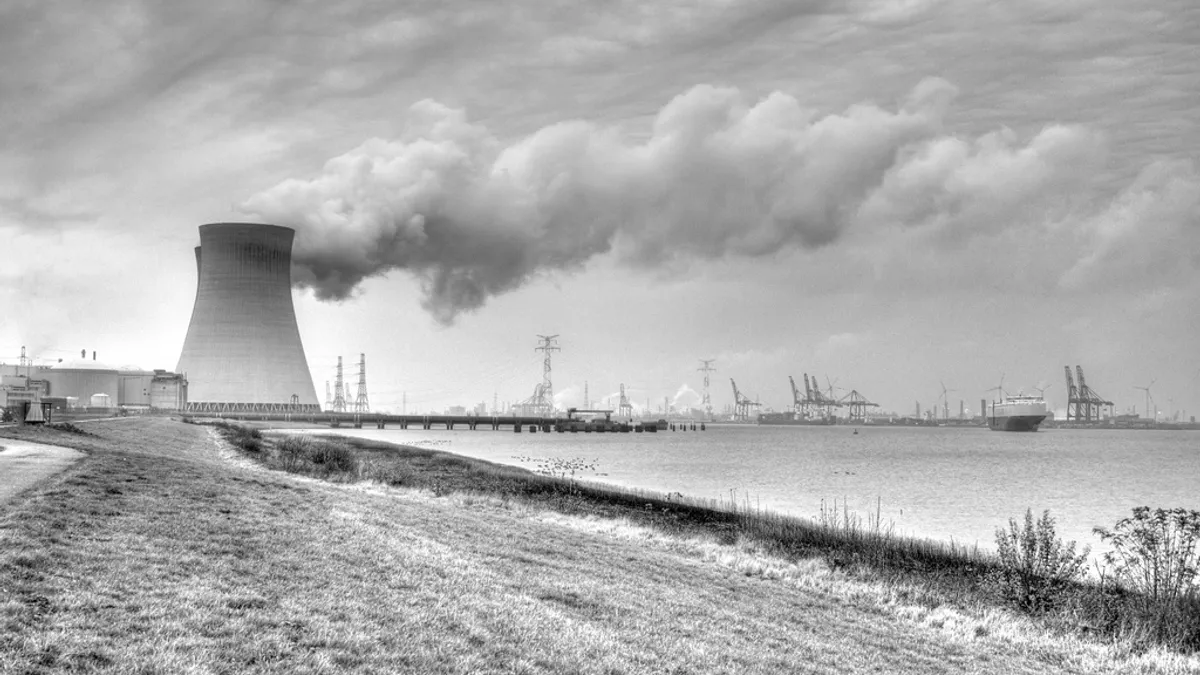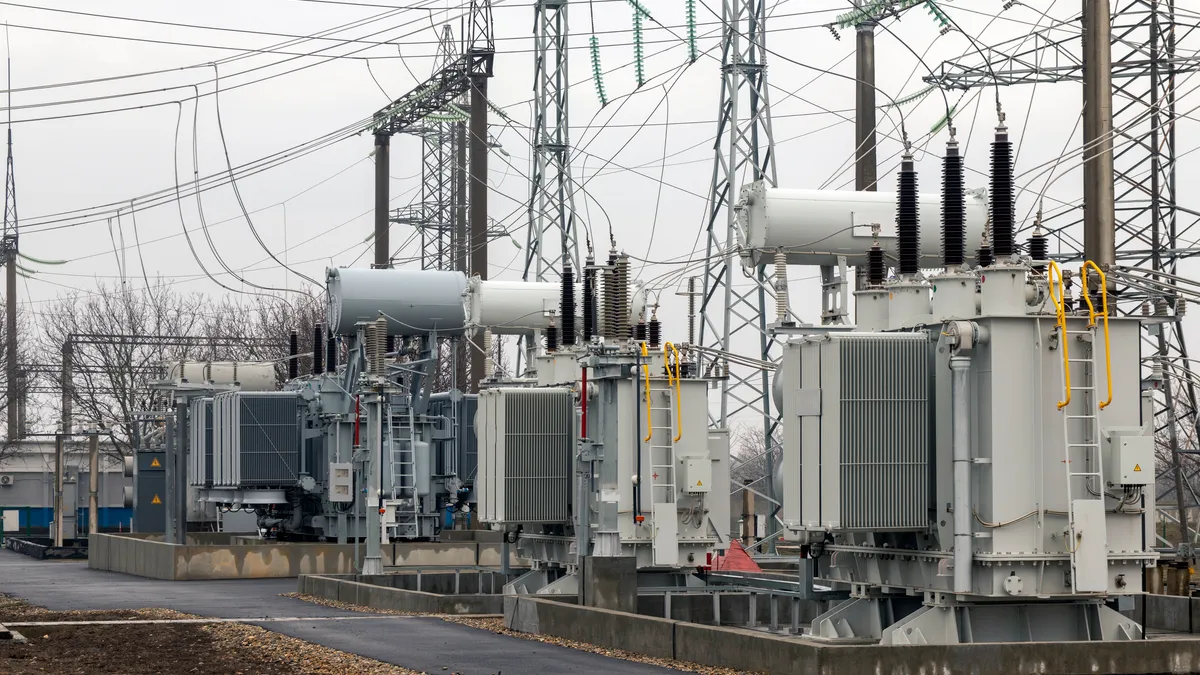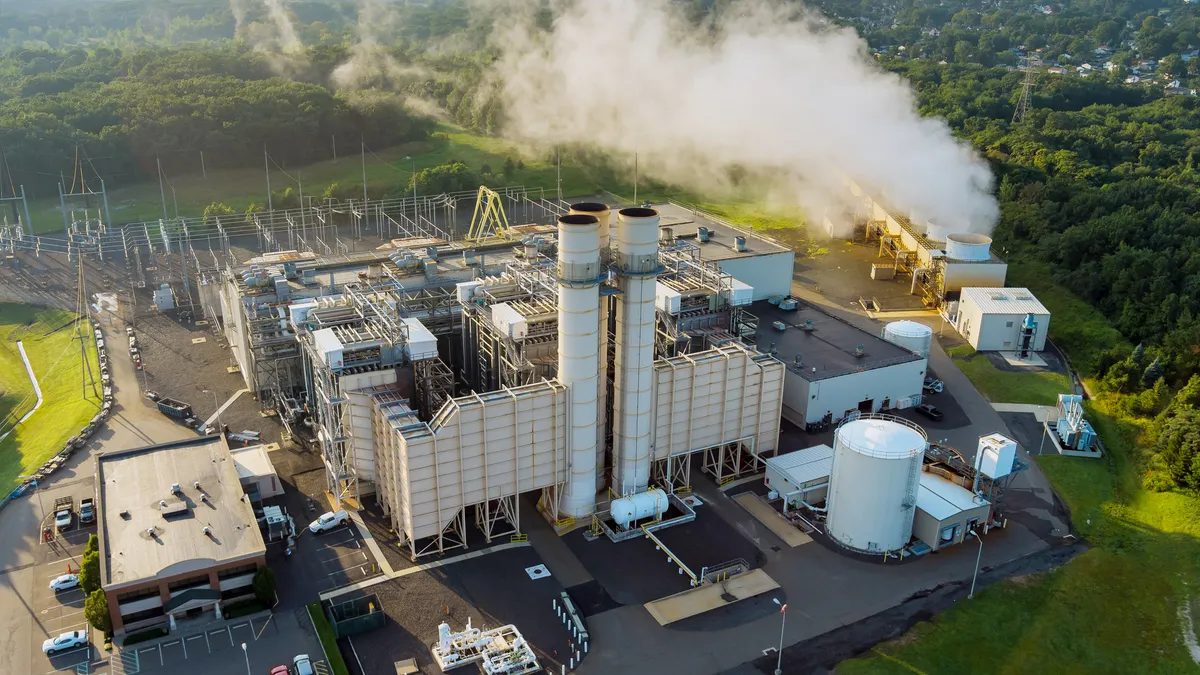The comment period for the Environmental Protection Agency’s Clean Power Plan closed December 1, 2014, with over 1.6 million contributions, including over 200 from utilities, regulators, and other public agencies.
This is the proactive engagement with the Plan that White House Special Assistant to the President for Energy and Climate Change Dan Utech recently described to Utility Dive.
The controversial rule, made by the agency under its authority from Section 111(d) of the Clean Air Act and affirmed by the Supreme Court, is aimed at cutting U.S. greenhouse gas emissions 30% below a 2012 benchmark by 2030.
“Someday, our children, and our children’s children, will look at us in the eye and they’ll ask us, did we do all that we could when we had the chance to deal with this problem and leave them a cleaner, safe, more stable world?” President Obama said about the plan. ““I refuse to condemn your generation and future generations to a planet that’s beyond fixing.”
The Plan sets specific emissions reductions for each state and offers 4 strategies to achieve them: States can (1) make their coal plants cleaner, (2) increase their use of natural gas, (3) develop nuclear and renewables portfolios, and/or (4) introduce demand side efficiencies. States also have the option of regional collaboration. The choices are aimed at leaving states as much flexibility as possible.
Legal challenge
Attorneys General of Oklahoma, West Virginia, Nebraska, Alabama, Florida, Georgia, Indiana, Kansas, Louisiana, Michigan, Montana, North Dakota, Ohio, South Carolina, South Dakota, Utah, and Wyoming are suing. "The proposed rule has numerous legal defects, each of which provides an independent basis to invalidate,” they jointly commented.
The EPA (1) does not have the authority to regulate existing power plants, (2) must finalize efforts with new plants before doing so, (3) has no authority over states’ energy generation, (4) imposes too-costly, inadequately flexible, and physically impossible standards, and (5) exceeds EPA the Federal Power Act authority, they argued.
Other legal challenges are in the works.
Grid operators
Regional transmission operator (RTO) Southwest Power Pool has 3 areas of “concern” about the rule, according to comments from President/CEO Nicholas A. Brown. It will impact reliability, the timing makes it “infeasible,” and it will compromise market dispatch. The timeframe must be modified “to avoid imposition of unnecessarily high costs and reliability risks.”
During that time, the EPA and the Federal Energy Regulatory Commission should do further planning for the necessary infrastructure to make emissions cuts practical and introduce “the ‘reliability safety valve’ as proposed by the ISO/RTO Council.”
RTO PJM Interconnection’s just released analysis of 15 scenarios concluded, by contrast, that states can reduce the costs of the plan by almost 30% through the plan’s regional collaboration option.
Advocacy groups
The EPA’s "very myopic view" fails to satisfy statutory obligations by not convening a Small Business Advocacy Review panel, wrote U.S. Chamber of Commerce Spokesperson Mary K. Martin. The agency is wrong in claiming the rule “will not have a significant economic impact upon a substantial number of small entities.”
The EPA’s cost-benefit analysis for this proposed regulation is "troublesome,” Martin also wrote. Like many other commenters, Martin argued that more time is needed. In particular, employment impacts must be evaluated, according to Martin, and “the lack of transparency and data quality surrounding the 'social cost of carbon' estimates should automatically disqualify them from use in any rulemaking process until these problems can be addressed.”
The League of Women Voters filed strong support of the Plan but wrote it “can and should be strengthened to better and more realistically recognize the tremendous potential for renewable energy and energy conservation.”
Based on American Lung Association findings, the League added, “[d]irty air, exacerbated by the climate change caused by carbon pollution, is responsible for premature deaths, respiratory disease and a higher risk of asthma attacks. Because it disproportionately affects low income communities, children, and seniors, “[w]e have a moral obligation to our children and future generations to address the cause of climate change …”
Leading the utility response, the Edison Electric Institute (EEI) wrote that the rule’s interim goal, which forces states to achieve much of the reductions before 2020, does not allow them time “to develop, plan, design, and complete the infrastructure required.” The result will be a significant impact on “cost and overall reliability of the electric system,” EEI wrote. “Eliminating the interim goals would allow states to determine the most cost-effective actions and measures to achieve EPA’s 2030 goals.”
Nuclear
EEI also called for a wider range of emissions reduction measures and a bigger role for the “existing nuclear fleet.”
The American Nuclear Society was “encouraged” by the EPA proposal but found 2 flaws, wrote President Michaele Brady Raap. First, EPA should “include 100% of each state’s existing nuclear generation.” Second, the Plan should allow states with nuclear plants under construction “to count the avoided emissions toward their compliance plans once they are operational.”
“We are pleased that EPA has recognized the important environmental, reliability, and economic benefits of existing nuclear power plants,” Exelon VP Kathleen Barrón told an Illinois Commerce Commission forum on the Plan. “All zero-carbon resources should be treated similarly.”
Environmentalists
There was support and a call for more from Sierra Club/Our Wild America. “This rule must not result in simply swapping out one fossil fuel for another, such as natural gas replacing coal,” wrote Director Dan Chu. States must prioritize “electricity from wind power and solar power and energy efficiency measures.”
Comments from NC WARN, the Institute for Energy and Environmental Research, the Institute for Energy and the Environment at Vermont Law School, and other environmental and energy justice organizations “show the Plan grossly overstates any benefits from natural gas and rightly criticizes any reliance on nuclear energy,” wrote Attorney John Runkle. He called for a stronger effort from Duke Energy and “stronger emission reduction goals that are based on efficiency and renewable energy sources.”
Duke Energy has been non-committal. “111(d) is an important rule,” President/CEO Lynn Good was quoted. “There are challenges in the rule from a variety of perspectives that we'll need to address and really wrestle with.”
More utilities weigh in
Southern Company was more forthcoming, arguing the rule is illegal, inadequately flexible, and will be costly. “We urge EPA to withdraw its proposal because it is overreaching and unworkable,” Spokesperson Jeannice Hall emailed. “…[O]ur overall conclusion is simple and clear: This proposal could undermine the ability to provide the reliable, affordable energy that Americans need.”
Compliance could cost Dominion Virginia Power customers “an extra $5.5 billion to $6 billion,” according to a reported Virginia State Corporation Commission staff analysis.
The Plan will allow the EPA “to fundamentally alter the way that electricity is generated and the way that Americans use electricity. We don’t believe that is the EPA’s job,” wrote National Rural Electric Cooperative Association Executive Director John Novak. It “goes too far, too fast” and does not “address cooperatives’ unique circumstances,” Novak added.
The rule “provides great flexibility for how states can achieve the required CO2 reductions” but “hardly any flexibility on when to achieve them,” commented NRG Energy VP Steve Corneli. It thereby (1) raises questions about reliability, cost, and stranded assets, (2) will lead to an increased deployment of natural gas plants that will freeze out renewables for a decade or more, and (3) imposes legal uncertainty that will cause resistance, litigation, and bad short term decisions.
To avoid reliability risks and price shocks from these things, Corneli suggested, EPA should (1) eliminate the 2020 interim goals but keep strong 2030 standards, (2) restructure the 2021 to 2029 compliance requirements, and (3) make state strategies more flexible.
“I have a real concern about the speed at which the changes being implemented by the Clean Power Plan will affect my work location and my life,” wrote Ameren Missouri’s John Cooper, a shift supervisor at the Meramec coal plant scheduled for shuttering in 2022.
Cooper understands change must come, he wrote. “I whole heartedly accept that it is our generation’s responsibility to turn the corner on our lasting effects on the environment.” But thousands of livelihoods and hundreds of communities are at stake, he added. “I only ask that you be patient and understanding of our plight and please try to work with my company and the many others like us...”





















